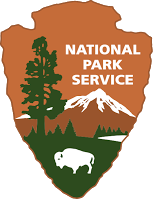NPS - Assessment of Indicator Sites & Quantifying Short-Term Effects of High Flows on Riparian Vegetation along the Yampa & Green Rivers

Project Type: Sponsored Research Project Sponsor: National Park Service [Northern Colorado Plateau Monitoring Network](http://science.nature.nps.gov/im/units/ncpn/index.cfm) Project Location: Dinosaur National Monument, CO/UT Status: Ongoing
Project Overview
Purpose of Project:
The purpose of this project was to design and implement a hypothesis driven, multi-scalar big river monitoring system that was cost effective and could be transferable to other networks and other monitoring programs that involve canyon-bound, big rivers of the arid and semiarid American west. Using a hypothesis driven approach this protocol seeks to quantify when and where hypothesized changes related to geomorphic simplification, vegetation encroachment and contraction (or expansion) of the riparian zone occur. Using a multi-scalar approach, this protocol seeks to include integrated assessments of change at site-specific to broad spatial scales (i.e., entire length of big rivers in NPS park units), that occur in response to climate- and human-related changes in stream flow.
Abstract:
Increasing human demands for water threaten big, canyon-bound rivers and their associated riparian and aquatic ecosystems across arid and semiarid regions of the western US. Channel narrowing is an ecological response to reduced streamflows that often is associated with increases in non-native riparian species; reduced channel complexity and aquatic habitat and diversity. Such degradation represents an important resource concerns for National Park Service (NPS) units containing these big rivers and has placed emphasis on monitoring and managing their condition. Given the limited NPS financial resources devote to monitoring big rivers in remote locations, we propose a hypothesis driven, multi-scalar Big Rivers Monitoring Protocol that builds on past and present monitoring efforts on the Green and Yampa rivers in Dinosaur National Monument, the Gunnison River at Black Canyon of the Gunnison National Park and Curecanti National Recreation Area and along the Colorado and Green Rivers in Canyonlands National Park. The design combines: 1) a park-wide remotely sensed inventory of geomorphic and vegetation change related to channel narrowing; 2) a spatially extensive field-based, rapid assessment of geomorphic and vegetation change on surfaces representing a range of susceptibility to channel narrowing ; 3) a detailed, quantitative field-based assessments of geomorphic and vegetation change at a small number of sites (sentinel sites) predicted to be sensitive to channel narrowing; and 4) the integration of sentinel sites with historical monitoring data and research at sites (legacy sites) that provide context and insight into dynamics of channel change and factors that drive this change.
Significance of Project:
Channel narrowing has significant impact on resources of concerns for NPS units containing these big rivers and has placed emphasis on monitoring and managing their condition.
Site Sensitivity on the Green and Yampa Rivers
Related Links & Research
Project Outputs
Publications from this Project
- Scott ML, Perkins D, Wheaton JM and Macfarlane WW. In Prep. Big River Monitoring Protocol for Large, Remote, Canyon-bound Rivers. For Submission to: River Research and Applications.
Project Details
Project PI: Joseph Wheaton, Michael Scott (co-PI) Project Personnel from ET-AL: Wally Macfarlane Project Collaborators: Dustin Perkins (NPS), Tamara Nauman (NPS) Funding Source: National Park Service Northern Colorado Plateau Monitoring Network Project Start Date: **Jan, 2012 **Project End Date (anticipated): Jan 2013
